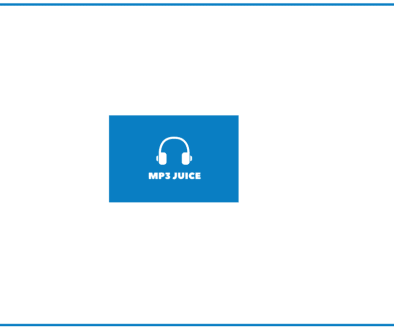December Global Holidays
December is a month filled with unique celebrations. In addition to the Christmas season, you will find Hanukkah and Festivus, as well as Saint Nicholas Day and Omisoka. In addition, there are plenty of opportunities to shower your loved ones with gifts and treats. Whether you’re looking to celebrate the season or celebrate a specific holiday, December is the perfect month to find something special for yourself or Global Holidays someone you love.
Table of Contents
Festivus
In the early 1960s, Daniel O’Keefe, an American author, editor, and television series writer, came up with the idea of celebrating a holiday that is unlike the commercial Christmas season. He dubbed it Festivus, and it was first celebrated in 1966. Inspired by Seinfeld, the holiday has become a tongue-in-cheek protest against commercialism.
Festivus was popularized in an episode of the sitcom “Seinfeld.” In 1966, the show’s creator Dan O’Keefe’s father found a reference to this obscure holiday while researching for his book. He decided to celebrate the holiday on December 23, which was the anniversary of the date he first met his wife.
Festivus is a holiday celebrated in many countries across the world. Unlike Christmas, the celebration involves a meal focusing on strength and courage. A traditional meal consists of sliced red meatloaf on a bed of lettuce and is free of alcohol. The tradition continues after the meal, when participants air their grievances to the group. To do so, they must start their speech with the phrase, “I have several issues with you people.”
Festivus is a secular holiday celebrated on December 23. It is not a religion and has roots in the pagan traditions of the Norse god Odin. It’s celebrated worldwide as a way to protest the commercialism of Christmas. In the United States, it has become a popular parody holiday and has even been portrayed in a popular television show, “Seinfeld.”
Hanukkah
December is a month filled with multicultural celebrations, including the Jewish holiday Hanukkah. Celebrated between late November and early December, this holiday is a time to give thanks and exchange gifts. In many parts of the world, Hanukkah is a major religious holiday. It begins on the 25th day of Kislev, the Hebrew calendar, and ends on the first day of the new year.
The Jewish holiday Hanukkah, which is also known as the Festival of Lights, marks the rededication of the Holy Temple in the ancient times. The festival lasts eight days and is celebrated with the lighting of menorah candles each night. The menorah has nine candles, including one called the shamash, which is used to light other candles. During the holiday, it is customary to eat foods fried in oil, such as potato latkes. People also play dreidel and exchange gifts.
Historically, children were given money during Hanukkah, but many families supplement this tradition by giving other gifts. Children are a key element of Hanukkah celebrations, and children are often the main focus of festivities. Jewish children are particularly likely to celebrate Hanukkah, and those in Jewish families are more likely to celebrate the holiday than those in non-Jewish families.
People celebrate Hanukkah by exchanging gifts and eating traditional Hanukkah foods. A traditional Hanukkah menu includes fried foods like latkes, sufganiyot, and jelly doughnuts.
Saint Nicholas Day
Saint Nicholas Day is one of the December global holiday traditions. The name comes from the 4th century Greek bishop, Nicholas of Myra. He was known for leaving items and coins for the poor. He was also known for helping the sick. In order to honor his memory, the holiday is celebrated on December 6 every year.
Other December global holidays include New Year’s Eve and Kwanzaa. African Americans celebrate Kwanzaa from 26th December to 1st January. In celebration of the holiday, African Americans decorate their houses with fruits and vegetables and light a kinara (candle holder). In addition to these December global holidays, New Year’s Eve is celebrated with fun and excitement around the world. Some Christian communities celebrate New Year’s Eve by attending church watch nights. In addition, many European nations celebrate Saint Nicholas Day on the sixth of December.
Children often write letters to St. Nicholas and leave treats in their shoes for him. In parts of Northern Europe and German-speaking areas, children leave carrots and grass for his donkey. Some also leave gold-foiled chocolate coins or oranges out for St. Nick. These are symbolic of the gifts St. Nicholas gave to three poor sisters.
Saint Nicholas is one of the most important Christian saints in history. His life inspired many legends. His mission was to protect children and the needy. Observing Saint Nicholas Day is a great way to show your faith and support for the poor.
Omisoka
Omisoka, the Japanese New Year, is a beautiful tradition that is celebrated on the 31st of December. This traditional festival is considered one of the most important in Japanese culture. In addition to the New Year, many people celebrate Omisoka by holding Bonenkai parties and sending greeting cards to their families and loved ones. Many families also bake and decorate rice cakes to commemorate the occasion. Omisoka is a time for purification and letting go of the old year.
Omisoka is a hopeful festival that marks the beginning of a new year. It brings new blessings, happiness, and hope. It is a beautiful festival and many people take time off to celebrate it. In addition to celebrating Omisoka, many people also celebrate Yule, which begins on December 21 and ends on January 1 of the following year. As part of December global holidays, these traditions are celebrated in different parts of the world.
Omisoka is the Japanese New Year’s Eve. People spend the day cleaning, attending temple services, and eating long-noodles called “toshikoshi-soba.” In addition to the traditional meal, many people also go to temples to pray for the coming year. During this time, many people also engage in the “hatsumode” ceremony, which is the first prayer of the year.
In addition to the holidays and festivals that are observed throughout December, many awareness days and cultural occasions also fall during this month. December also marks World Aids Day, an annual celebration that began in 1987. While December is a busy time for many people, it is an important time to take care of yourself and your loved ones.
World AIDS Day
World AIDS Day is a global holiday celebrated on December 1 to raise awareness of the AIDS pandemic and to remember the victims who lost their lives to AIDS. The disease is caused by the Human Immunodeficiency Virus (HIV). Since its discovery in 1981, nearly 75 million people have become infected with HIV and millions more have died from AIDS-related causes. During the early 1990s, a new drug, infected with the virus, was developed, making it possible to reduce the risk of contracting the disease and to treat it. Today, HIV infection is curable, allowing patients to live longer and have a better quality of life.
AIDS is a disease that starts with the HIV virus and weakens the body’s immune system. It first broke out in the early 1980s and was spread by unprotected sex with a partner who did not wear condoms. The first World AIDS Day commemorations were devoted to children and young adults, and the disease has since become a major event celebrated around the world. Some countries even make December 1 a public holiday.
World AIDS Day is an annual global holiday celebrated on December 1. Founders James Bunn and Thomas Netter wanted to use the holiday to increase public awareness of the AIDS pandemic and dispel myths about the disease. The holiday is observed by people in many countries by wearing red ribbons and donating to organizations that fight the virus. In addition, some cities hold special events to honor the victims of the AIDS epidemic and promote HIV prevention.
Saint Lucia’s Day
Saint Lucia’s Day is one of the many global holidays celebrated in December. The holiday honors a young martyr of the Christian faith from Italy who died in the fourth century. She is also considered the patron saint of the blind. A procession of children and adults is held in honor of St. Lucia, including a candle-lit procession and a singing girl in a white robe. Children and adults in the procession carry saffron buns and cookies.
In the Orthodox tradition, Saint Lucia’s Day in December marks the beginning of the Christmas season. Families gather to light a candle to honor the Saint. Housewives also prepare traditional foods over a few days. Among the popular dishes served are fish, slava, and cake. Saffron is also used as a decoration for buns and cakes for Saint Lucia’s Day.



